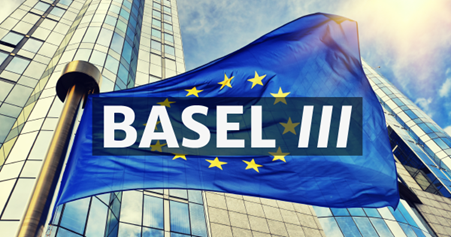热门话题
2025年1月20日,特朗普重返白宫,其主张的“美国优先”政策不仅引发了全球资本市场震荡,更可能重塑美国金融监管格局。其中,银行业的核心监管框架——巴塞尔协议III的“终局”规则(Basel III Endgame)成为焦点,特朗普政策与巴塞尔协议实施之间的复杂博弈也就此展开。巴塞尔协议III自2008年金融危机后推出,旨在通过提高资本充足率、优化风险权重计算等方式增强银行业抗风险能力。2023年,美联储提出“终局”规则草案,要求大型银行额外增加资本金。当时,这一提案遭到银行业强烈反对,认为其过度严苛且会削弱美国银行的国际竞争力。按原提案,全球系统重要性银行(G-SIBs)的普通股一级资本需增加9%,而资产规模超过2500亿美元的银行面临更严格资本要求。而美国银行业普遍已经持有超额资本,根据德勤2025年最新报告,截至2024年第二季度,区域性银行的商业地产贷款占风险资本比例高达199%,远超大型银行的54%,凸显其资本压力。

特朗普政府历来主张放松金融监管。其政策团队已表态支持修订巴塞尔协议III规则,降低资本要求。2024年9月,美联储副主席Michael Barr宣布新提案,取消部分“镀金”标准(即严于国际规则的要求),并保留分级监管模式。这些调整直接回应了银行业的诉求,例如:1.住宅地产和零售业务风险权重下调,减轻中小银行负担;2.税收抵免权益融资风险权重降低,鼓励绿色能源等政策支持领域;3.操作风险资本计算简化,按净收入而非总收入计量。但是,特朗普的政策纲领与巴塞尔协议的实施方向还是存在多重冲突,主要体现在以下三方面:1. 贸易保护主义 vs 全球监管协调特朗普主张对进口商品征收10%基准关税,对个别国家征收更高关税,并推动制造业回流。施罗德报告指出,这类政策可能推高企业融资成本,间接影响银行信贷质量。与此同时,巴塞尔协议要求各国监管标准趋同,但美国若单方面放宽规则,可能引发“逐底竞争”。例如,欧盟已推迟实施巴塞尔3.1至2026年,英国则推迟到2027年1月1日,英格兰银行审慎监管局(PRA)修订后的规则对资本要求影响低于1%,并强调“公平竞争环境”,暗示可能跟随美国调整。

2. 利率政策干预 vs 银行业净息差压力特朗普曾批评美联储加息政策,主张更“宽松的货币政策”。市场预计2025年美国联邦基金利率或降至3.5%-3.75%,净息差(NIM)预计从2024年的3.15%下滑至3%。利率下行虽可能刺激抵押贷款需求,但存款成本高企(2025年计息存款成本预计达2.03%)将挤压银行利润。若特朗普施压美联储进一步降息,银行业需在贷款定价与存款争夺间寻找新平衡。3. 国内优先战略 vs 小银行生存困境特朗普强调“本土经济优先”,利好以国内业务为主的小型银行。美国小盘股(如罗素2500指数成分股)76%收入来自本土,而标普500公司仅59%。区域性银行因商业地产风险敞口集中,2025年净核销率或升至0.66%,创十年新高。若特朗普政府推动减税(如延长2017年税改)并放松社区银行监管,或为小银行注入喘息空间。特朗普的回归,标志着美国金融监管从“风险防范”转向“增长优先”,美国对巴塞尔协议的调整可能加剧国际监管分化。巴塞尔协议III的“终局”规则修订,既是政治博弈的结果,也是银行业自救的契机。然而,放松监管的代价可能是长期风险的积累——若经济衰退与信贷质量恶化叠加,2008年的危机阴影或将重现。对于全球银行业而言,如何在合规与盈利间找到动态平衡,将是未来十年的终极命题。免责声明:GO Markets 分析师或外部发言人提供的信息基于其独立分析或个人经验。所表达的观点或交易风格仅代表其个人;并不代表 GO Markets 的观点或立场。联系方式:墨尔本 03 8658 0603悉尼 02 9188 0418中国地区(中文) 400 120 8537中国地区(英文) +248 4 671 903作者:Christine Li | GO Markets 墨尔本中文部




.jpg)
.jpg)



.jpg)


